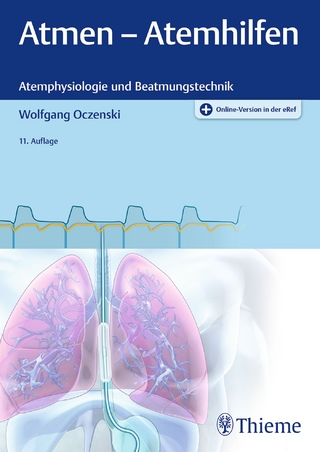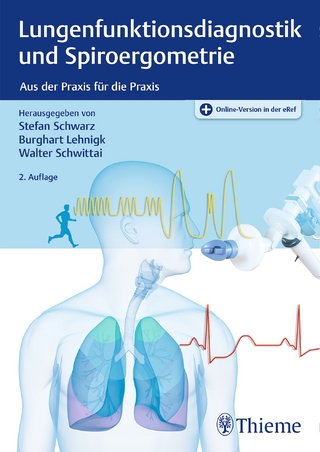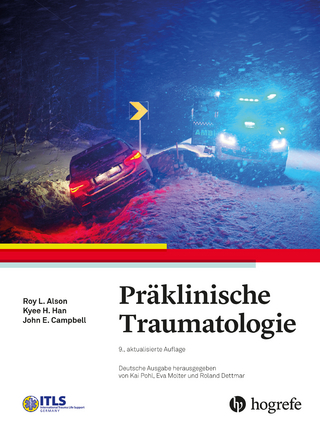
Fluid Resuscitation
State of the Science for Treating Combat Casualties and Civilian Injuries
Seiten
1999
National Academies Press (Verlag)
978-0-309-06481-1 (ISBN)
National Academies Press (Verlag)
978-0-309-06481-1 (ISBN)
Fluid resustication and the treatment of hypovolemia offers oppurtunities for reducing mortality and morbidity associated with battlefield casualties. This book presents an assessment of resuscitation fluids and protocols for the treatment of combat casualties and provides recommendations for research.
Historically, 20% of all injured combatants die on the battlefield before they can be evacuated to a field hospital. Blood loss—hemorrhage—is the single major cause of death among those killed in action whose lives might otherwise be saved. Fluid resuscitation and the treatment of hypovolemia (the abnormally decreased volume of circulating fluid in the body) offer the greatest opportunity for reducing mortality and morbidity associated with battlefield casualties.
In Fluid Resuscitation, a committee of experts assess current resuscitation fluids and protocols for the treatment of combat casualties and make recommendations for future research. Chapters focus on the pathophysiology of acute hemorrhagic shock, experience with and complications of fluid resuscitation, novel approaches to the treatment of shock, protocols of care at the site of injury, and future directions for research.
The committee explicitly describes the similarities and differences between acute medical care during combat and civilian emergency trauma care. Fluid Resuscitation should help energize and focus research in both civilian and military emergency care and help save the lives of citizens and soldiers alike.
Table of Contents
Front Matter
Executive Summary
1 Introduction
2 Pathophysiology of Acute Hemorrhagic Shock
3 Experience with and Complications of Fluid Resuscitation
4 Novel Approaches to Treatment of Shock
5 Protocols of Care at the Site of Injury
6 Future Directions
References
A: Acknowledgments
B: Acronyms
C: Conference Agenda
D: Committee and Staff Biographies
Index
Historically, 20% of all injured combatants die on the battlefield before they can be evacuated to a field hospital. Blood loss—hemorrhage—is the single major cause of death among those killed in action whose lives might otherwise be saved. Fluid resuscitation and the treatment of hypovolemia (the abnormally decreased volume of circulating fluid in the body) offer the greatest opportunity for reducing mortality and morbidity associated with battlefield casualties.
In Fluid Resuscitation, a committee of experts assess current resuscitation fluids and protocols for the treatment of combat casualties and make recommendations for future research. Chapters focus on the pathophysiology of acute hemorrhagic shock, experience with and complications of fluid resuscitation, novel approaches to the treatment of shock, protocols of care at the site of injury, and future directions for research.
The committee explicitly describes the similarities and differences between acute medical care during combat and civilian emergency trauma care. Fluid Resuscitation should help energize and focus research in both civilian and military emergency care and help save the lives of citizens and soldiers alike.
Table of Contents
Front Matter
Executive Summary
1 Introduction
2 Pathophysiology of Acute Hemorrhagic Shock
3 Experience with and Complications of Fluid Resuscitation
4 Novel Approaches to Treatment of Shock
5 Protocols of Care at the Site of Injury
6 Future Directions
References
A: Acknowledgments
B: Acronyms
C: Conference Agenda
D: Committee and Staff Biographies
Index
Committee on Fluid Resuscitation for Combat Casualties, Institute of Medicine
1 Front Matter; 2 Executive Summary; 3 1 Introduction; 4 2 Pathophysiology of Acute Hemorrhagic Shock; 5 3 Experience with and Complications of Fluid Resuscitation; 6 4 Novel Approaches to Treatment of Shock; 7 5 Protocols of Care at the Site of Injury; 8 6 Future Directions; 9 References; 10 A: Acknowledgments; 11 B: Acronyms; 12 C: Conference Agenda; 13 D: Committee and Staff Biographies; 14 Index
| Erscheint lt. Verlag | 5.11.1999 |
|---|---|
| Verlagsort | Washington |
| Sprache | englisch |
| Maße | 152 x 229 mm |
| Themenwelt | Medizin / Pharmazie ► Medizinische Fachgebiete ► Arbeits- / Sozial- / Umweltmedizin |
| Medizinische Fachgebiete ► Innere Medizin ► Pneumologie | |
| Medizin / Pharmazie ► Medizinische Fachgebiete ► Notfallmedizin | |
| ISBN-10 | 0-309-06481-3 / 0309064813 |
| ISBN-13 | 978-0-309-06481-1 / 9780309064811 |
| Zustand | Neuware |
| Haben Sie eine Frage zum Produkt? |
Mehr entdecken
aus dem Bereich
aus dem Bereich
Aus der Praxis für die Praxis
Buch (2022)
Thieme (Verlag)
71,00 €
International Trauma Life Support (ITLS)
Buch | Softcover (2024)
Hogrefe AG (Verlag)
70,00 €


